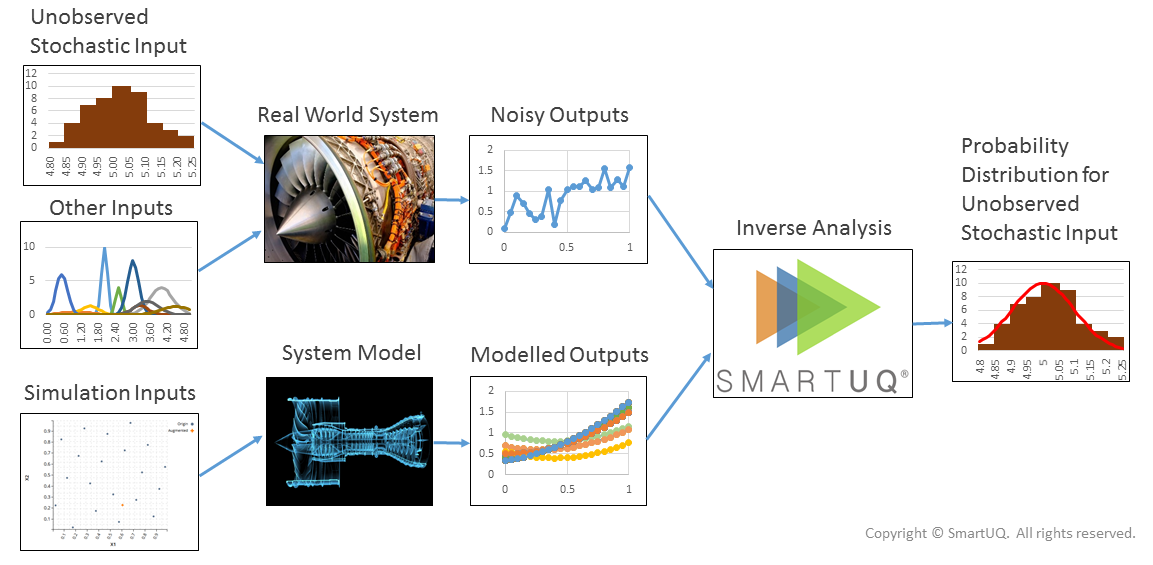Inverse analysis characterizes the unknown stochastic parameters of a system using a model of the system and corresponding noisy data. Unknown parameters are common in simulations and physical data analysis and this technique plays an important role in quantifying a parameter’s value, uncertainty, and distribution. The Figure below shows the process flow for a typical inverse analysis problem.
 Figure 1: Diagram showing the information flow of inverse analysis
Figure 1: Diagram showing the information flow of inverse analysisThe unknown system properties analyzed with inverse analysis often include unknown governing equations, shapes, sizes, boundary and initial values, material properties, fluxes, and forces. Inverse analysis problems are ill-formed in that unique solutions are not guaranteed and deterministic methods often fail to produce applicable results. The difficulties in using deterministic methods are made worse by noisy data, numerical calculation error, and modeling inaccuracies. Probabilistic methods and uncertainty quantification offer a more robust means of analyzing these problems.
Knowing the distributions of uncertain inputs is one of the first steps in effectively implementing uncertainty quantification and stochastic design processes. These distributions are also useful for numerous other purposes such as determining part compliance and actual system performance.
In the aerospace industry, typical inverse analysis applications include determining ideal shapes to match specific pressure distributions, estimating structural parameters of complex systems, and identifying irregularities in parts using scan data.
In ground vehicle manufacturing, typical inverse analysis applications include system design to meet probabilistic objectives, determination of unknown operating and environmental conditions from machine performance data, and identification of component properties from noisy operational data.
SmartUQ’s inverse analysis estimation feature makes use of a system model and corresponding noisy physical test data to estimate the characteristics of the probability distribution of the unknown stochastic inputs to a system. These stochastic inputs are often hard to observe physical values, properties of the model with no direct physical correspondence, or unknown boundary and initial conditions.
For example, the material properties, such as Young’s modulus, of an actual component in use in an aircraft or vehicle may not be precisely known due to manufacturing variations. The input distribution estimation feature takes in relevant component response data, for example force and strain measurements, and estimates the distribution characteristics of the material properties in the physical parts.
SmartUQ can handle inverse analysis problems with far fewer simulation runs at a fraction of the time and computational cost. This efficiency and speed allows inverse analysis methods to be applied to more data sets yielding more complete analytics and uncertainty quantification.